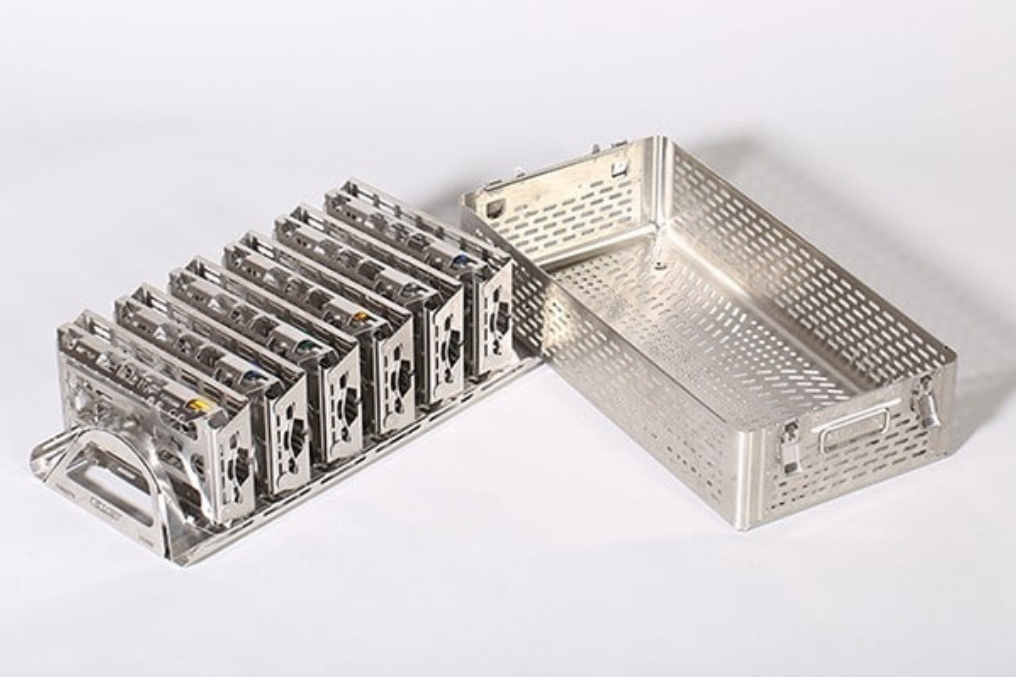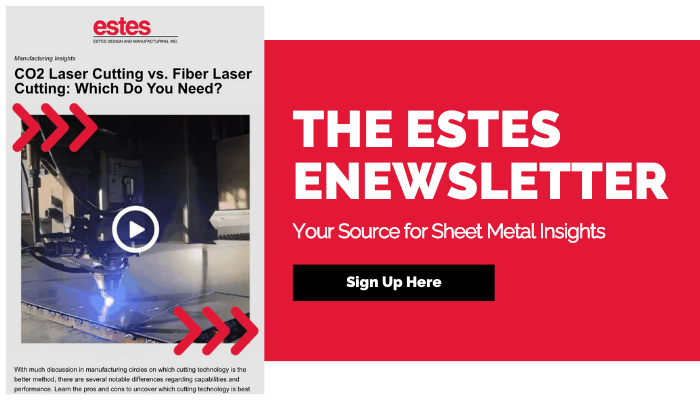Estes Design and Manufacturing Director of Business Development Roger Brown and Product Development Manager Jay Engh answer the most frequently asked questions about designing and manufacturing medical devices and components. From prototyping to manufacturing, here are their answers to these top questions:
1. What technologies do you use for prototyping medical devices?
At Estes, we use advanced 3D printing and modeling to mock up medical instruments, tools, and components so we can test our design as we progress. We also conduct and record drop tests, including slow-motion movement testing.
However, before prototyping even begins, we spend dedicated time working with the customer to get detailed criteria for the project. “We then validate and verify all of the points of the criteria along the way. Our goal is to avoid revisions during the prototyping phase as this slows the project and adds costs,” Jay says.
2. How long does prototyping take?
The amount of time spent in prototyping depends on the size of the project. A 2-piece weldment will move through prototyping faster than a 40-piece weld assembly with 10 outside processes. So the answer really is – it just depends.
3. What materials do you typically work with when manufacturing medical devices?
Primarily, we work with stainless steel for medical device manufacturing. We do manufacture some components, such as outer cases, in aluminum.
4. What is the expected manufacturing lead-time?
Overall, lead-time depends on material availability, the number of outside processes, such as laser scribing or Teflon coating, and how well the customer knows what they want from the onset. At Estes, our lead-times are known to be shorter than others due to our automated sheet metal fabrication equipment and having three shifts running.
“Just last week, we got prints in the morning from a customer and were shipping parts that afternoon, so we can turnaround in as little as one day,” Roger points out. ”And we also have complex, multi-year projects that have gone through multiple revisions from the customer during the product development phase.”
5. What experience and expertise does Estes have in medical device design and manufacturing?
Estes is an FDA-registered facility with more than 30 years of experience in prototyping and manufacturing medical devices. Our team of more than 100 associates includes design engineers, production engineers, a prototyping team, skilled tradesmen, and more. Our 85,000-square-foot manufacturing space is equipped with state-of-the-art technology and advanced automation to ensure precise, high-quality, best-in-class products.
A recent project of ours included partnering with Dr. Babak Hassid to design and build a motorized shield, called The Freedom Shield, that removes cumbersome lead aprons and frees doctors and nurses to X-ray safely and comfortably.

6. What quality control measures do you have in place?
We are both ISO 13485 and ISO 9001 certified. ISO 13485 ensures we have the systems in place to meet the stringent requirements of medical device regulations and quality, while ISO 9001 is a universal certification that speaks to quality management systems.
We also have our own autoclave for testing and data collection during the design and prototyping phase. For example, we have a latch that we are currently testing its longevity using the autoclave to capture how it withstands being cycled through a heating and cooling process thousands of times.
And, we are diligent about quality inspections at each step of the process. A part or component only moves to the next step once it meets quality standards.
7. What can we expect when working with Estes on a project?
At Estes, we focus on open communication and collaboration. We start with an introductory call to get our team and your team together to discuss the project. We’ll do plant tours at your facility and invite you to ours. You’ll have an established team for the project, including a project manager and an account manager. Project updates are as often as you like – weekly, biweekly, or during certain milestones.
8. Why should we partner with Estes to design and manufacture a new medical device?
“We are going to embrace the project from the start, whether you bring us a sketch or a stack of drawings and models,” Roger says. “We will grasp the opportunity and work with you from start to finish, regardless of where you are in the design phase. If a doctor came in with a bag of tools, tossed them on our desk, and said, ‘I need a tray to hold these,’ we would figure it out.”









